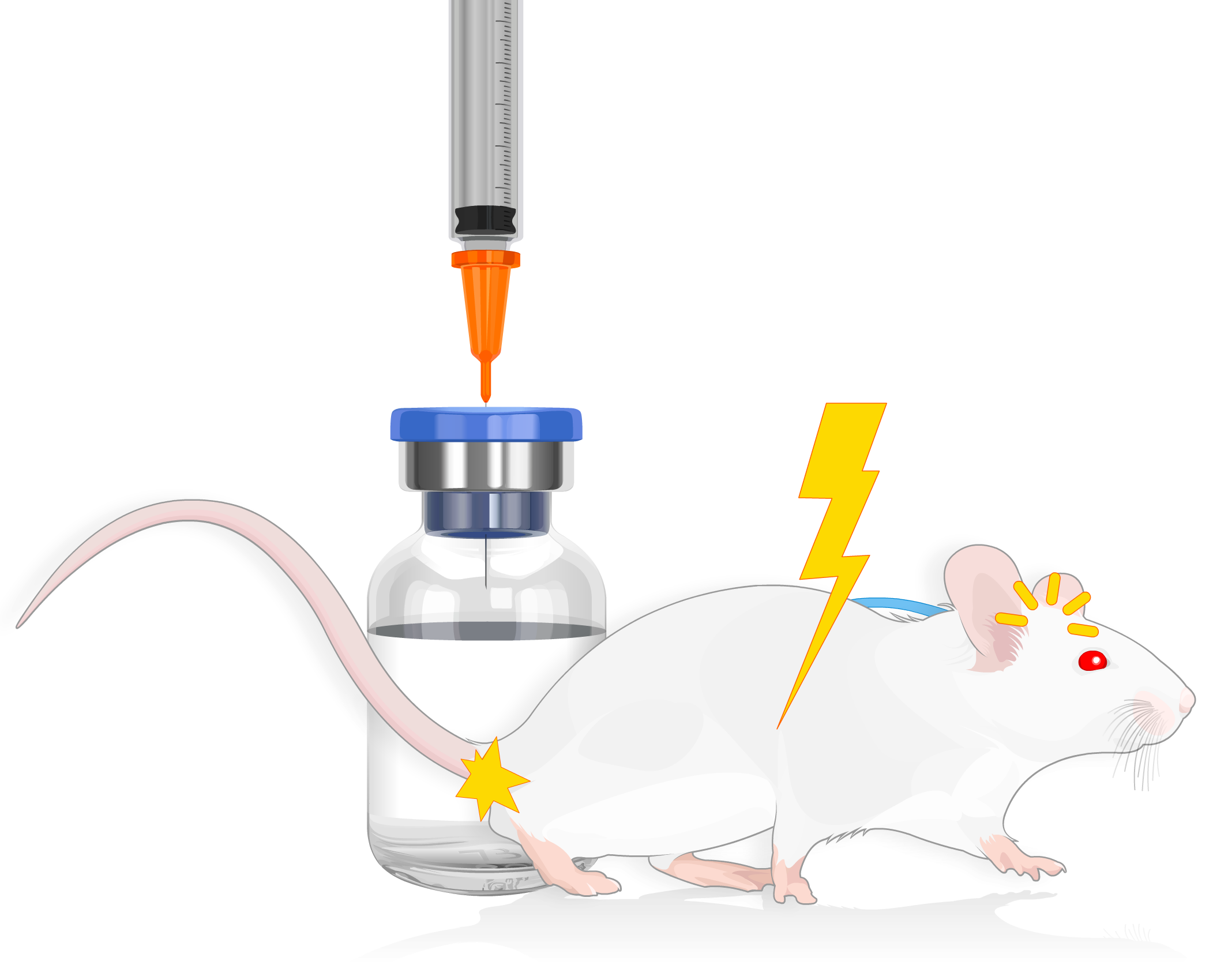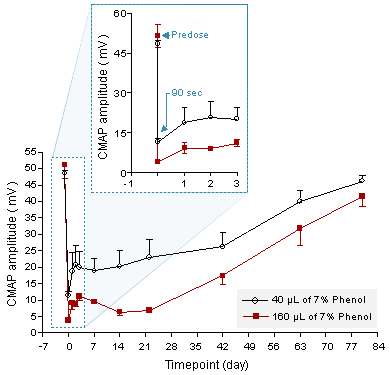Newsletter # 82

Animal models
NEUROFIT's data are the first to highlight in rats the long-term neurolytic effect of clinical doses of Phenol.
-

-
■ CMAP amplitudebr
The graph illustrates the depression of evoked electrical response (Compound Muscular Action Potential) of rat gastrocnemius muscle following perineural (sciatic nerve) injection of 7% Phenol.
■ The effect is prompt as a maximal depression is observed within minutes following the injection.
The blockade lasts for several weeks and the return to the pre-dose level of the muscle response does not occur before 3 months' time. Such as in the clinical setting, additional injection doses are also possible at any time.
Get in touch


 PREVIOUS
PREVIOUS